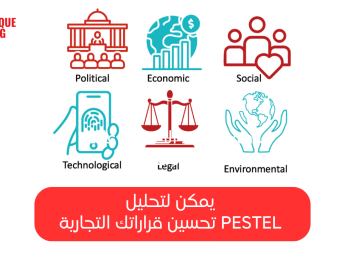In recent years, the traditional office-based work model has undergone significant transformations, and one of the most prominent changes is the rise of hybrid work. The term "hybrid work" refers to a flexible work arrangement that combines both remote work and in-office work. It offers employees the freedom to choose where and when they work, striking a balance between the benefits of remote work and the advantages of a physical workplace. In this blog post, we will explore what hybrid work means, examine the impact of COVID-19 on this model, delve into the benefits it offers, discuss the cons of adopting a hybrid workplace, and finally, explore ways to implement this model in your workplace or work environment.
What Does Hybrid Work Mean?
Hybrid work represents a paradigm shift in the traditional 9-to-5 office-based work culture. In a hybrid work setup, employees have the autonomy to decide when they work remotely from home or any other location and when they come into the physical workplace. This model offers flexibility and empowers employees to customise their work routine to best suit their individual needs and preferences.
The Effect of COVID-19 on Hybrid Work
The outbreak of the COVID-19 pandemic in early 2020 forced organisations across the globe to adapt swiftly to remote work solutions to ensure business continuity and safeguard the health of their employees. Consequently, many companies experienced the potential of remote work firsthand. Employees demonstrated high levels of productivity, and technology proved to be a formidable enabler of remote collaboration. This unexpected experiment catalysed the transition to a hybrid work model, as businesses began recognising its potential benefits.
The Benefits of Hybrid Work
Amidst the changing landscape of modern work environments, embracing the hybrid work model comes with a host of benefits that have the potential to revolutionise the way we approach our careers and work-life balance. Let’s go more in depth into them:
Increased Employee Satisfaction and Work-Life Balance
One of the primary advantages of the hybrid work model is its ability to enhance employee satisfaction and promote a healthier work-life balance. By granting employees the autonomy to choose their work environment, whether it be from the comfort of their homes or the collaborative setting of the office, the hybrid model eliminates the rigid constraints of a traditional 9-to-5 workday.
Commuting, a time-consuming and often stressful aspect of daily work life, is significantly reduced. This not only frees up valuable time for employees but also contributes to a more sustainable lifestyle. The newfound flexibility allows individuals to allocate time to personal pursuits, family responsibilities, or simply to relax and recharge. As a result, employees experience less burnout, increased job satisfaction, and a greater sense of control over their professional and personal lives.
Enhanced Productivity
Hybrid work acknowledges and leverages the fact that individuals have different working styles and preferences. Some thrive in the tranquillity of a home office, while others draw inspiration from the bustling energy of a physical workplace. The key to enhanced productivity lies in providing employees with the freedom to choose the environment that best aligns with their workflow.
For tasks requiring deep focus and concentration, remote work can be the ideal setting. Conversely, collaborative projects may benefit from the spontaneous interactions and face-to-face communication facilitated by in-office work. By allowing employees to tailor their work environment based on the nature of their tasks, hybrid work optimises productivity by tapping into the strengths of both remote and in-person work settings.
Talent Acquisition and Retention
The hybrid work model broadens the horizons of talent acquisition for businesses. Traditionally bound by geographic constraints, organisations can now recruit skilled individuals from various locations, creating a more diverse and dynamic workforce. This not only expands the talent pool but also fosters a culture of inclusivity, bringing together individuals with unique perspectives and experiences.
Moreover, the flexibility offered by the hybrid model aligns with the evolving preferences of the modern workforce. As employees increasingly prioritise work-life balance and flexibility, adopting a hybrid approach becomes a strategic move for organisations looking to attract and retain top talent. Companies that offer the freedom to balance remote and in-office work are more likely to be viewed favourably by prospective employees and enjoy higher retention rates among existing staff.
Cost Savings for Employers and Employees
The financial implications of adopting a hybrid work model extend to both employers and employees. For employers, the reduced need for expansive office spaces translates to significant cost savings. Smaller office footprints require less maintenance, lower utility expenses, and decreased spending on facilities management. This newfound financial efficiency can be redirected towards strategic investments, employee benefits, or other initiatives that contribute to organisational growth.
Employees, on the other hand, experience direct cost savings. The elimination or reduction of daily commutes leads to decreased transportation expenses and a lower carbon footprint. Additionally, the reduced need for work attire, daily lunches, and other incidental expenses associated with office-based work contributes to increased disposable income for remote workers. These financial perks further contribute to job satisfaction and overall well-being.
Environmental Benefits
Beyond the financial advantages, the hybrid work model has positive implications for the environment. The reduction in the number of employees commuting daily translates to a significant decrease in carbon emissions. The environmental impact of commuting—whether by car, public transport, or other means—is a substantial contributor to an organisation's overall carbon footprint.
By promoting a more sustainable approach to work, the hybrid model aligns with corporate social responsibility initiatives and demonstrates a commitment to environmental stewardship. This can be a compelling factor for both employees and clients who increasingly prioritise sustainability when choosing where to work or engage in business partnerships.
Statistics
According to Apollo Technical, the Remote Work & Compensation Pulse Survey conducted in May 2021 brought to light compelling insights about employees' and employers' preferences. Notably, 48% of the surveyed employees expressed a resolute desire for a fully remote work setup, while 44% embraced the idea of a hybrid work arrangement. Among employers, a noteworthy 51% rallied behind the concept of a hybrid work model, whereas only a mere 5% considered the option of fully remote work. These findings shed light on the evolving landscape of work preferences and its impact on the future of the workforce.
Cons of Being a Hybrid Workplace
Even though hybrid work comes with a host of benefits, it is essential to recognise that transitioning to a hybrid workplace also brings its set of challenges and potential drawbacks that demand careful consideration and proactive management:
Communication and Collaboration Challenges
One of the primary concerns in a hybrid work setting revolves around the potential difficulties in maintaining seamless communication and collaboration among team members, especially when some are working remotely and others are present in the office. Miscommunication can arise due to differences in communication channels, time zones, and the lack of spontaneous face-to-face interactions.
To mitigate these challenges, organisations must invest in robust communication platforms that facilitate real-time collaboration. Regular virtual meetings, team check-ins, and the use of instant messaging tools can help bridge the gap and ensure that remote and in-office employees stay connected. Clear communication protocols and expectations can further alleviate misunderstandings and foster a collaborative work environment.
Potential Inequality among Employees
Without careful management, a hybrid work model may inadvertently create a divide between remote and in-office workers. Those physically present in the office might have more opportunities for face-to-face interactions with leadership, networking, and participation in impromptu discussions. This could lead to a perception of preferential treatment for in-office employees, potentially impacting morale and team dynamics.
To address this challenge, organisations need to implement inclusive practices that ensure equal opportunities for all employees, regardless of their work location. Virtual meetings, decision-making processes, and access to professional development opportunities should be structured to provide a level playing field for both remote and in-office staff. Encouraging a culture of transparency and openness can further help dispel any perceptions of inequality.
Technology and Security Concerns
The successful implementation of a hybrid work model is heavily reliant on robust technology infrastructure. Remote work introduces new challenges related to data security, network access, and the potential for technical issues that could hinder productivity. Ensuring that employees have access to secure communication platforms, project management tools, and necessary hardware is essential for a seamless remote work experience.
Moreover, organisations must address cybersecurity concerns associated with remote work. The decentralised nature of a hybrid model increases the risk of data breaches, making it imperative to implement stringent security protocols. Measures such as multi-factor authentication, secure virtual private networks (VPNs), and regular cybersecurity training for employees can help mitigate these risks and safeguard sensitive company information.
Managerial Challenges
Managing a hybrid team comes with its own set of challenges for leaders and managers. Effectively supervising remote teams, measuring performance, and providing support and feedback become more complex when physical presence is not a constant. Managers may struggle to gauge the well-being of their team members, identify signs of burnout, or address concerns in a timely manner.
To overcome these challenges, organisations should invest in managerial training programmes specifically tailored for leading hybrid teams. Emphasising the importance of trust, clear communication, and result-oriented performance management is crucial. Managers need to be equipped with the skills to lead teams in diverse working environments and foster a sense of cohesion among remote and in-office employees.
Lack of Spontaneous Collaboration
In a traditional office setting, spontaneous collaboration often occurs organically. Employees can quickly gather in common areas for impromptu discussions, problem-solving sessions, or creative brainstorming. In a hybrid work model, the absence of physical proximity may hinder these spontaneous interactions, potentially impacting the flow of ideas and innovative thinking.
To address this, organisations can create virtual spaces for informal discussions and collaboration. Platforms that facilitate watercooler-style conversations, virtual team-building activities, and scheduled brainstorming sessions can help recreate the sense of spontaneity that occurs naturally in a physical office environment.
Potential Feelings of Isolation
Remote workers, in particular, may experience feelings of isolation due to the lack of daily interactions with colleagues. The sense of being 'out of sight, out of mind' can lead to feelings of detachment and hinder team cohesion. This can, in turn, impact employee morale, engagement, and overall job satisfaction.
To counteract feelings of isolation, organisations should prioritise regular team-building activities, both virtual and in-person when possible. Establishing a strong company culture that values inclusivity and encourages open communication is essential. Additionally, providing avenues for social interactions, such as virtual coffee breaks or casual team check-ins, can contribute to a sense of belonging among remote team members.
While the cons of adopting a hybrid work model are notable, they are not insurmountable. By acknowledging these challenges and implementing proactive strategies, organisations can create a work environment that maximises the benefits of flexibility while mitigating potential drawbacks. The key lies in thoughtful planning, clear communication, and a commitment to fostering inclusivity and collaboration in both remote and in-office settings.
How Can My Workplace Or Work Become Hybrid?
Transitioning to a hybrid work model involves careful planning and clear communication to ensure a smooth implementation. Here are some steps to make your workplace or work environment hybrid-friendly:
1- Assess Feasibility and Define Guidelines
Before embarking on the journey to a hybrid work model, conduct a comprehensive feasibility study. Assess the nature of your organisation's work, the roles of different teams, and the practicality of remote work for each. Consider the impact on collaboration, communication, and overall productivity.
Once the feasibility is established, define clear and transparent guidelines. Outline who is eligible for remote work, the number of days employees can work remotely, and expectations regarding in-office attendance. Clearly communicate these guidelines to all staff members to ensure a shared understanding of the new work structure.
2- Invest in Technology
A smooth transition to a hybrid work model heavily depends on the technology and tools available to your workforce. Equip your employees with the necessary hardware and software to facilitate seamless remote collaboration. This includes secure communication platforms, project management tools, video conferencing software, and cloud-based storage solutions.
Ensure that employees have access to reliable internet connections and provide training on how to use these tools effectively. Investing in technology not only enhances productivity but also fosters a sense of connectivity among remote and in-office teams.
3- Address Communication Challenges
Maintaining open lines of communication is vital for the success of a hybrid work environment. Establish a communication strategy that caters to both remote and in-office teams. Regular check-ins, virtual meetings, and digital communication channels can help bridge the gap and ensure that everyone feels connected.
Encourage the use of collaboration tools for real-time communication and project updates. Implementing a clear and consistent communication protocol helps minimise misunderstandings and ensures that information is disseminated effectively across the organisation.
Table 1: Collaboration tools for virtual teams
Collaboration Tool | Description | Benefits |
Slack | Real-time messaging for efficient communication | Facilitates quick and organised team conversations. |
Microsoft Teams | Integrated platform for chat, video meetings | Seamless collaboration with document sharing. |
Trello | Visual project management with customisable boards | Streamlines task tracking and enhances team visibility. |
Zoom | Video conferencing and virtual meeting platform | Enables face-to-face interactions for remote teams. |
Google Workspace | Cloud-based collaboration tools for seamless teamwork | Real-time document editing and shared calendars. |
4- Encourage Team-Building Activities
The physical distance between remote and in-office employees can lead to a sense of isolation. Counteract this by organising regular team-building activities and social events. These activities foster camaraderie and unity among team members, regardless of their work location.
Consider a mix of virtual and in-person team-building activities, depending on the geographical distribution of your workforce. Virtual coffee breaks, online games, or shared virtual experiences can bring employees together, creating a positive and collaborative work culture.
5- Provide Managerial Training
The shift to a hybrid work model requires a corresponding shift in managerial practices. Train managers to effectively lead hybrid teams, emphasising the importance of trust, clear communication, and result-oriented performance management.
Managers should be equipped with the skills to assess and support remote team members. Training programmes should focus on leveraging technology for supervision, maintaining team cohesion, and addressing potential challenges related to remote work.
6- Establish a Security Framework
The security of company data is paramount in a hybrid work environment. Establish a robust security framework to protect against potential breaches and ensure the confidentiality of sensitive information.
Implement secure networks, multi-factor authentication, and encryption protocols. Provide cybersecurity training to all employees, educating them on best practices for remote work security. Regularly update security measures to stay ahead of evolving cybersecurity threats.
7- Monitor and Adapt
The implementation of a hybrid work model is an iterative process. Regularly monitor its effectiveness and gather feedback from employees. Assess the impact on productivity, employee satisfaction, and collaboration.
Be prepared to adapt and make adjustments as needed. Flexibility is a key component of the hybrid work model, and organisations must be agile in responding to changing circumstances and evolving employee needs.
Conclusion
The rise of hybrid work represents a pivotal moment in the evolution of the career model. It offers employees the autonomy to work in a way that best suits their lifestyle while providing organisations with a competitive edge in attracting and retaining top talent. The COVID-19 pandemic acted as a catalyst for this transformation, highlighting the potential of remote work and its positive impact on productivity and work-life balance.
While hybrid work brings numerous advantages, it is not without its challenges. Effective communication, equal opportunities, and technological readiness are crucial elements to address in the implementation of this model. By carefully assessing your organisation's readiness and investing in the right technology and managerial support, you can create a successful hybrid work environment that optimises employee satisfaction, productivity, and business outcomes.
As we step into the future of work, embracing the hybrid work model will require adaptability, open-mindedness, and a commitment to creating a flexible, inclusive, and thriving work culture for all employees.
Discover the secrets to mastering hybrid work with our course ‘Managing Change in a Post-Covid Environment.’ Unravel the intricacies of this transformative work model, and equip yourself with the knowledge and tools to build a dynamic, future-proof workplace that attracts top talent and drives organisational excellence.






















